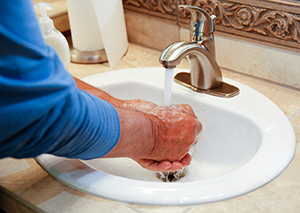Es importante que cuide bien el dispositivo de acceso venoso central. Si no lo hace, puede infectarse. Y ya no podría usarlo. Habrá que quitar el tubo (catéter) y colocar uno nuevo en otra vena. Su enfermera le enseñará a cuidar de su acceso para prolongar su duración.
Siga estos consejos
-
Lávese las manos a menudo con agua potable y jabón.
-
Trate de no tocar el catéter. Cualquiera que deba tocarlo debe lavarse las manos y usar guantes descartables nuevos.
-
No permita que nada (por ejemplo, la ropa) roce o tire del catéter.
-
Evite mojar el catéter. Pídale sugerencias para ducharse o bañarse al equipo de atención médica.
Esté pendiente de posibles problemas
Llame a su proveedor de atención médica de inmediato si tiene alguno de estos problemas:
-
Nota una rotura en los tubos.
-
La piel alrededor de su acceso sangra, supura o se torna roja o sensible.
-
Tiene fiebre de 100.4 °F (38 °C) o superior, o según lo que le haya indicado el proveedor de atención médica.
-
Los puntos (suturas) o el vendaje que cubre el catéter se aflojan o el catéter se sale.
-
Tiene un brazo inflamado o doloroso.
Nota
Generalmente un acceso por vena central se utiliza solo por un tiempo breve. Cuide muy bien de su acceso.
Proveedor de atención médica: enfermero
Nombre _______________________________ Teléfono _______________________________
Nombre _______________________________ Teléfono _______________________________
Featured in



